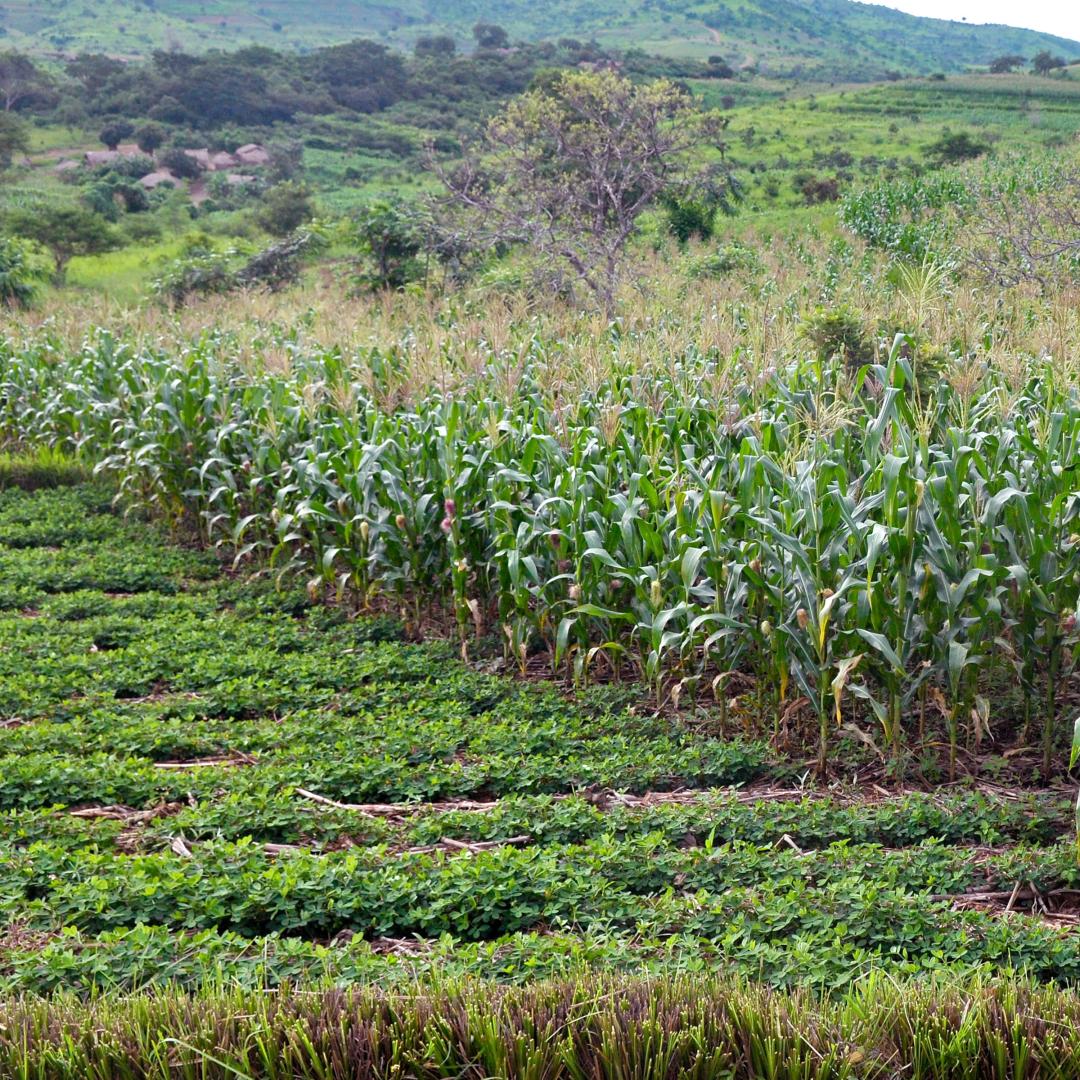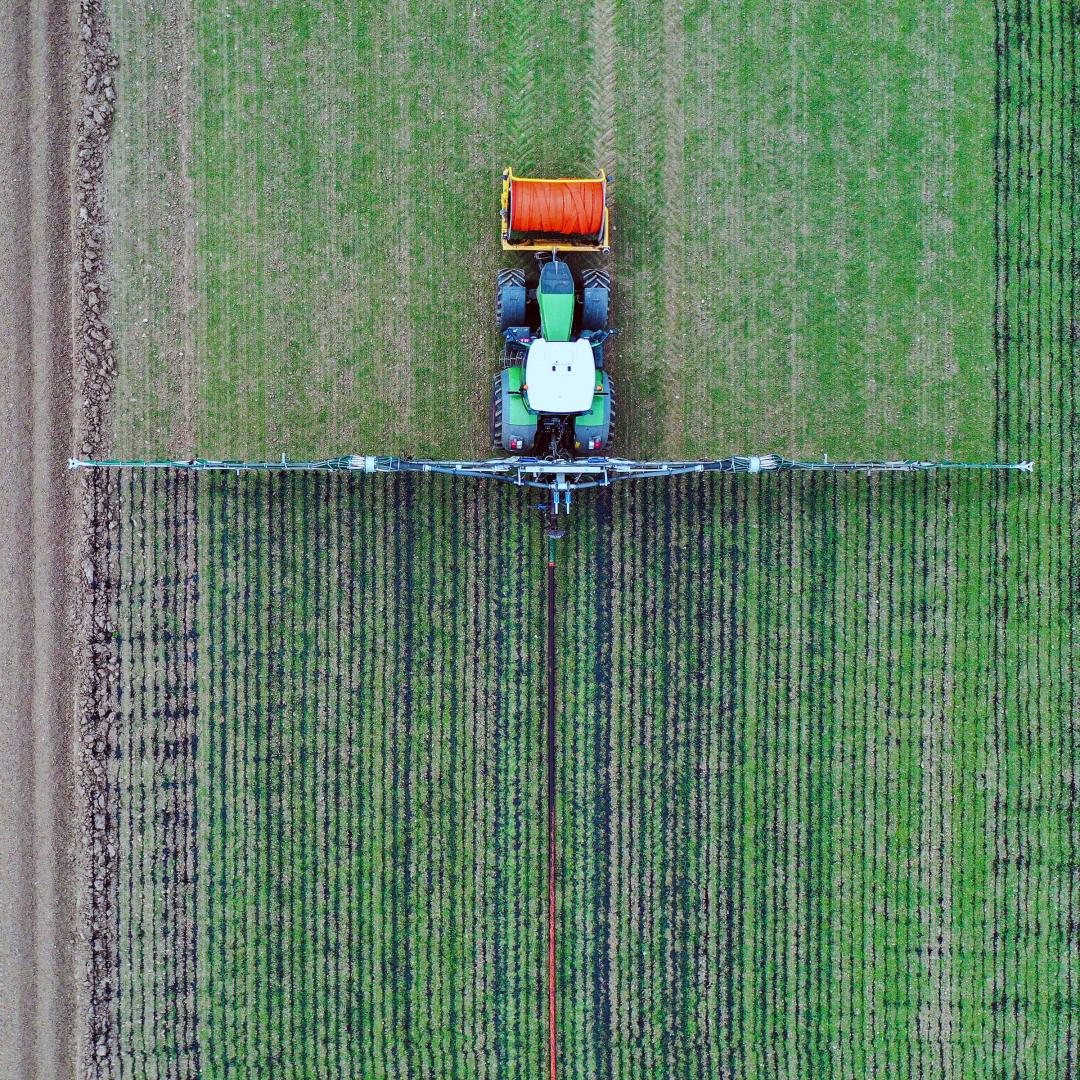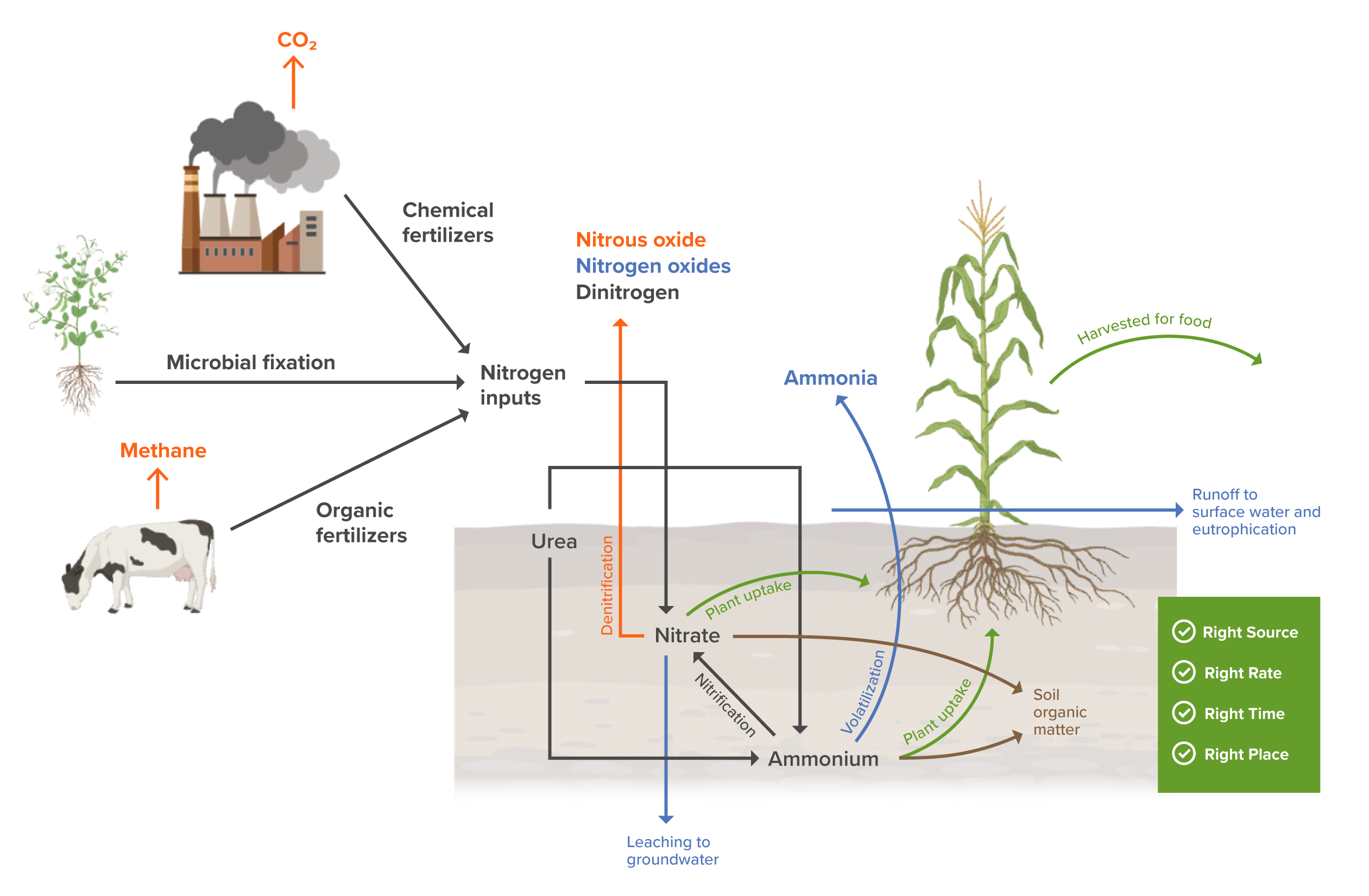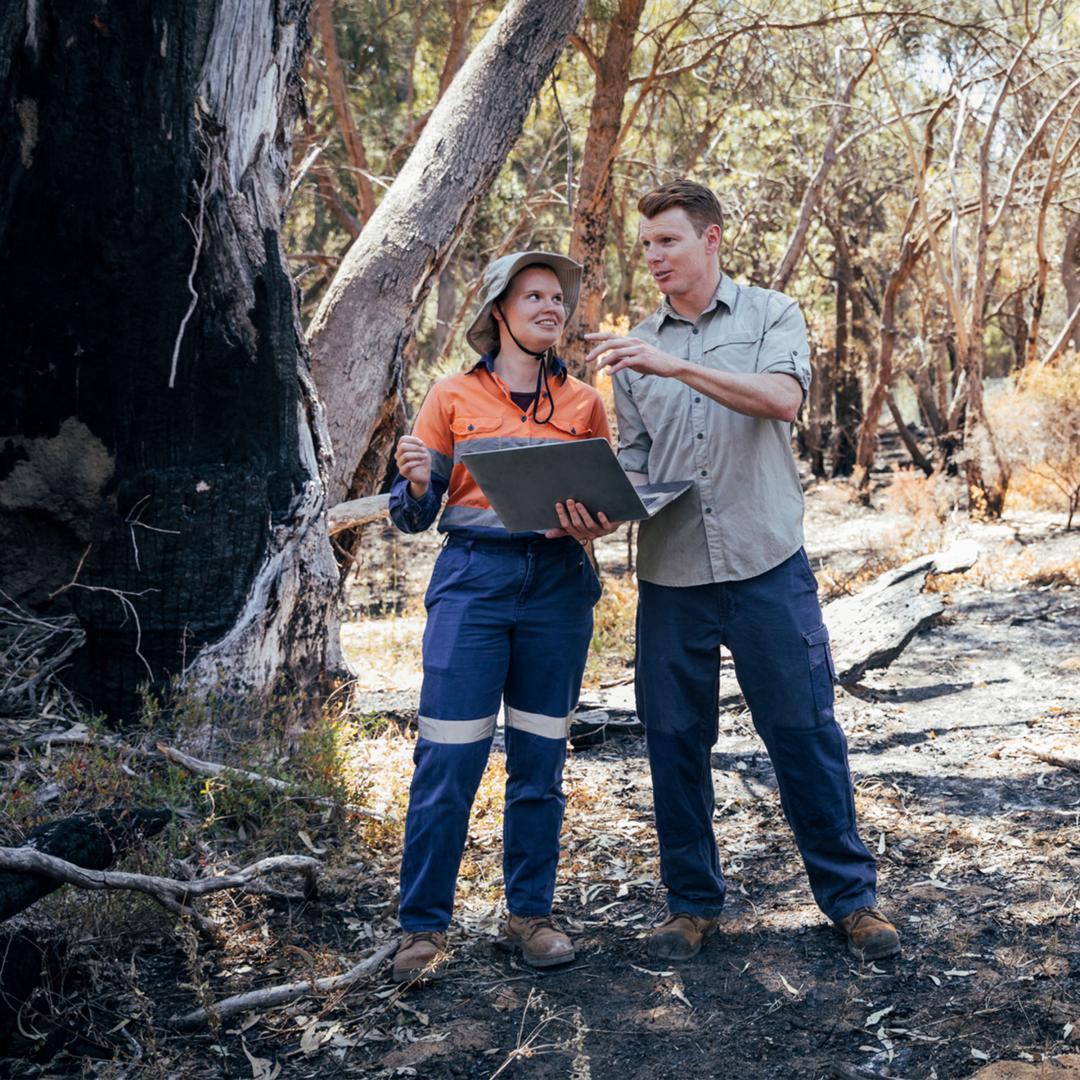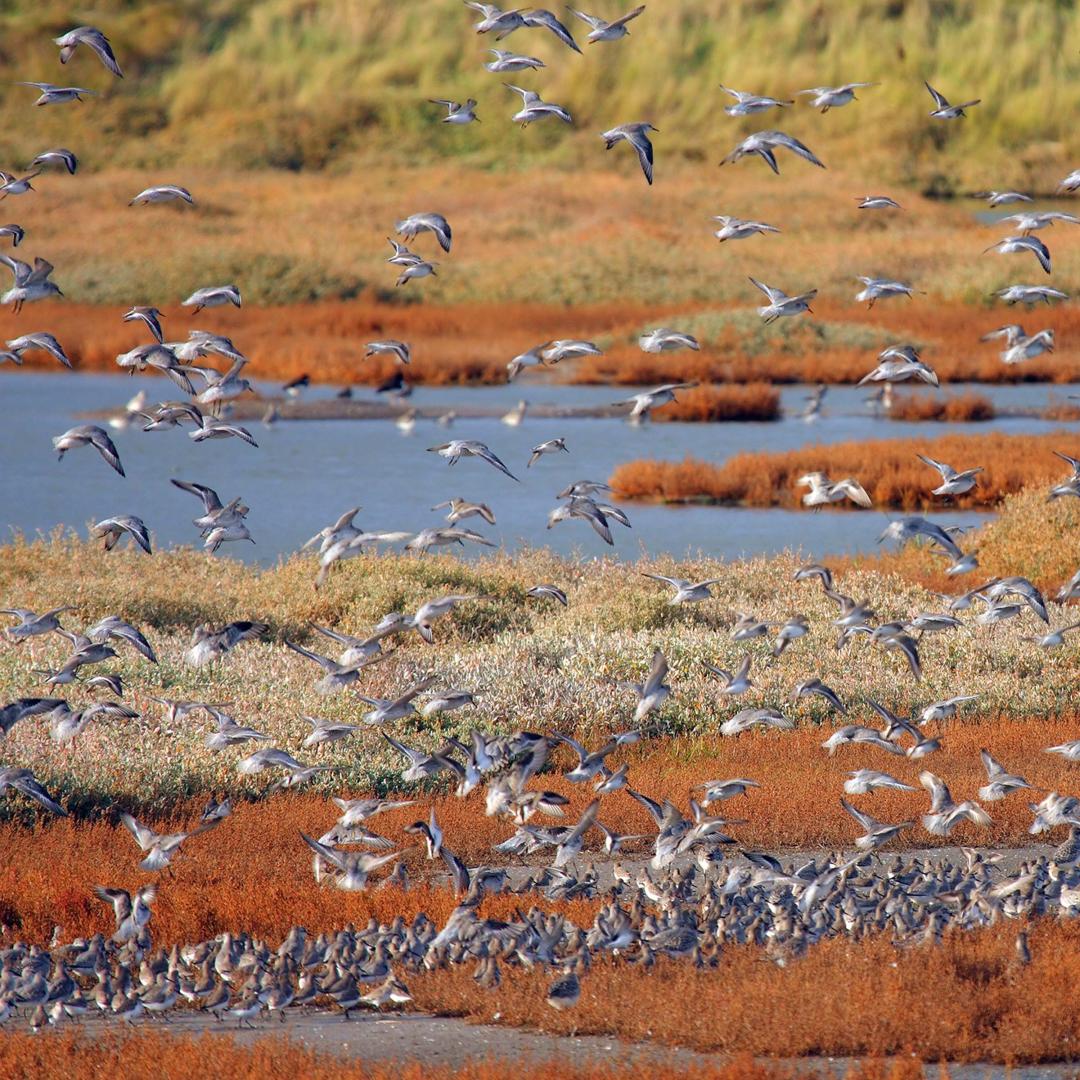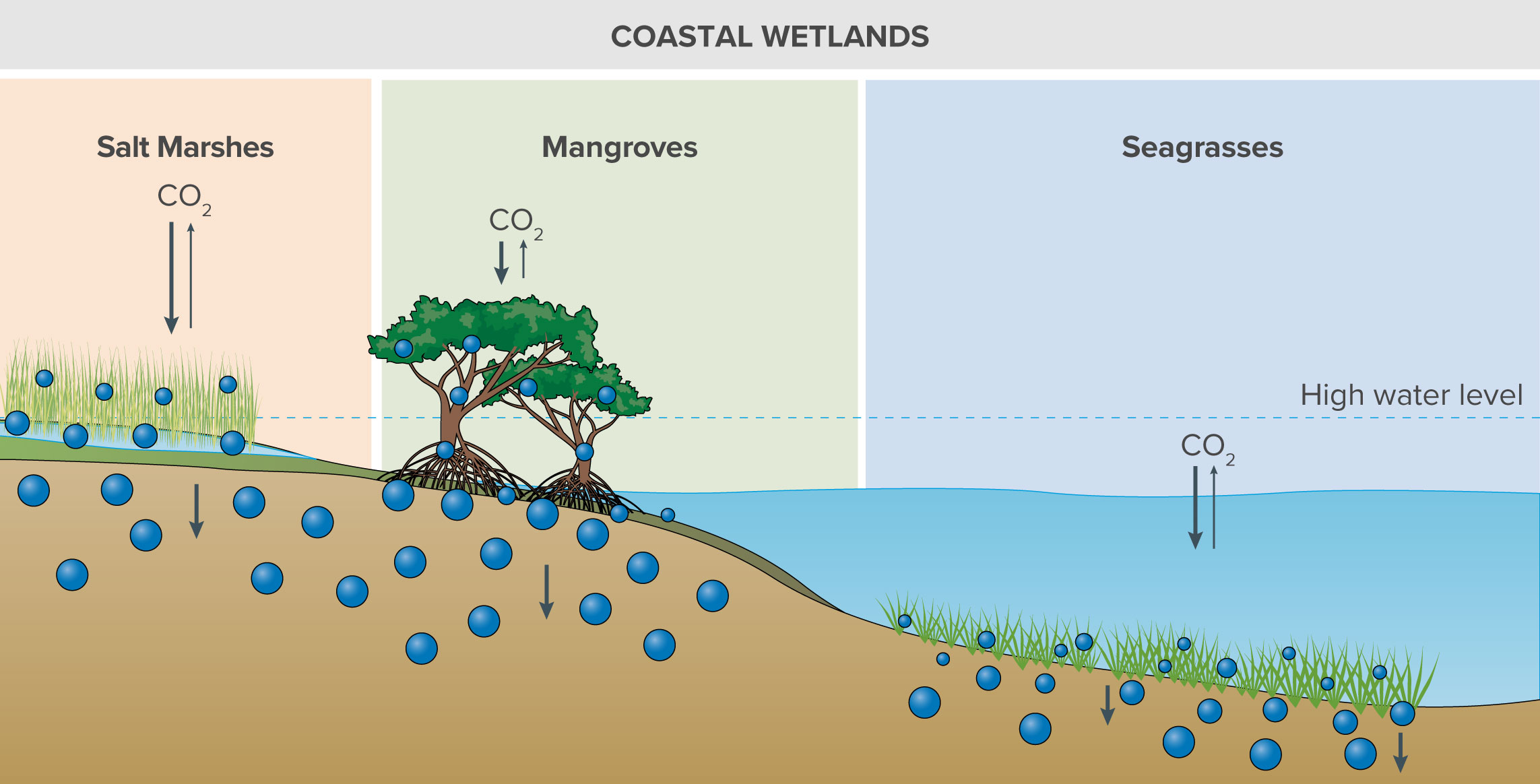Adame, M. F., Kelleway, J., Krauss, K. W., Lovelock, C. E., Adams, J. B., Trevathan-Tackett, S. M., Noe, G., Jeffrey, L., Ronan, M., Zann, M., Carnell, P. E., Iram, N., Maher, D. T., Murdiyarso, D., Sasmito, S., Tran, D. B., Dargusch, P., Kauffman, J. B., & Brophy, L. (2024). All tidal wetlands are blue carbon ecosystems. BioScience, 74(4), 253–268. Link to source: https://doi.org/10.1093/biosci/biae007
Balmford, A., Gravestock, P., Hockley, N., McClean, C. J., & Roberts, C. M. (2004). The worldwide costs of marine protected areas. Proceedings of the National Academy of Sciences, 101(26), 9694–9697. Link to source: https://doi.org/10.1073/pnas.0403239101
Baniewicz, T. (2020, September 2). Coastal Louisiana tribes team up with biologist to protect sacred sites from rising seas. Southerly. Link to source: https://southerlymag.org/2020/09/02/coastal-louisiana-tribes-team-up-with-biologist-to-protect-sacred-sites-from-rising-seas/
Barbier, E. B., Georgiou, I. Y., Enchelmeyer, B., & Reed, D. J. (2013). The value of wetlands in protecting southeast Louisiana from hurricane storm surges. PLoS ONE, 8(3), Article e58715. Link to source: https://doi.org/10.1371/journal.pone.0058715
Blanchard, L., Haya, B. K., Anderson, C., Badgley, G., Cullenward, D., Gao, P., Goulden, M. L., Holm, J. A., Novick, K. A., Trugman, A. T., Wang, J. A., Williams, C. A., Wu, C., Yang, L., & Anderegg, W. R. L. (2024). Funding forests’ climate potential without carbon offsets. One Earth, 7(7), 1147–1150. Link to source: https://doi.org/10.1016/j.oneear.2024.06.006
Borchert, S. M., Osland, M. J., Enwright, N. M., & Griffith, K. T. (2018). Coastal wetland adaptation to sea level rise: Quantifying potential for landward migration and coastal squeeze. Journal of Applied Ecology, 55(6), 2876–2887. Link to source: https://doi.org/10.1111/1365-2664.13169
Bruner, A. G., Gullison, R. E., & Balmford, A. (2004). Financial costs and shortfalls of managing and expanding protected-area systems in developing countries. BioScience, 54(12), 1119–1126. Link to source: https://doi.org/10.1641/0006-3568(2004)054[1119:FCASOM]2.0.CO;2
Chauhan, R., Datta, A., Ramanathan, A. L., & Adhya, T. K. (2017). Whether conversion of mangrove forest to rice cropland is environmentally and economically viable? Agriculture, Ecosystems & Environment, 246, 38–47. Link to source: https://doi.org/10.1016/j.agee.2017.05.010
Cullen-Unsworth, L. C., & Unsworth, R. (2018). A call for seagrass protection. Science, 361(6401), 446–448. Link to source: https://doi.org/10.1126/science.aat7318
Department of Climate Change, Energy, the Environment and Water. (2016). Wetlands and Indigenous values [Fact sheet]. Commonwealth of Australia. Link to source: https://www.dcceew.gov.au/sites/default/files/documents/factsheet-wetlands-indigenous-values.pdf
Dabalà, A., Dahdouh-Guebas, F., Dunn, D. C., Everett, J. D., Lovelock, C. E., Hanson, J. O., Buenafe, K. C. V., Neubert, S., & Richardson, A. J. (2023). Priority areas to protect mangroves and maximise ecosystem services. Nature Communications, 14(1), Article 5863. Link to source: https://doi.org/10.1038/s41467-023-41333-3
Davidson, N. C. (2014). How much wetland has the world lost? Long-term and recent trends in global wetland area. Marine and Freshwater Research, 65(10), 934–941. Link to source: https://doi.org/10.1071/MF14173
Di Minin, E., & Toivonen, T. (2015). Global protected area expansion: Creating more than paper parks. BioScience, 65(7), 637–638. Link to source: https://doi.org/10.1093/biosci/biv064
Dinerstein, E., Joshi, A. R., Hahn, N. R., Lee, A. T. L., Vynne, C., Burkart, K., Asner, G. P., Beckham, C., Ceballos, G., Cuthbert, R., Dirzo, R., Fankem, O., Hertel, S., Li, B. V., Mellin, H., Pharand‑Deschênes, F., Olson, D., Pandav, B., Peres, C. A., … Zolli, A. (2024). Conservation Imperatives: Securing the last unprotected terrestrial sites harboring irreplaceable biodiversity. Frontiers in Science, 2, Article 1349350. Link to source: https://doi.org/10.3389/fsci.2024.1349350
Donato, D. C., Kauffman, J. B., Murdiyarso, D., Kurnianto, S., Stidham, M., & Kanninen, M. (2011). Mangroves among the most carbon-rich forests in the tropics. Nature Geoscience, 4(5), 293–297. Link to source: https://doi.org/10.1038/ngeo1123
Eyre, B. D., Camillini, N., Glud, R. N., & Rosentreter, J. A. (2023). The climate benefit of seagrass blue carbon is reduced by methane fluxes and enhanced by nitrous oxide fluxes. Communications Earth & Environment, 4(1), Article 374. Link to source: https://doi.org/10.1038/s43247-023-01022-x
Feng, Y., Song, Y., Zhu, M., Li, M., Gong, C., Luo, S., Mei, W., Feng, H., Tan, W., & Song, C. (2025). Microbes drive more carbon dioxide and nitrous oxide emissions from wetland under long-term nitrogen enrichment. Water Research, 272, Article 122942. Link to source: https://doi.org/10.1016/j.watres.2024.122942
Fletcher, M.-S., Hamilton, R., Dressler, W., & Palmer, L. (2021). Indigenous knowledge and the shackles of wilderness. Proceedings of the National Academy of Sciences, 118(40), Article e2022218118. Link to source: https://doi.org/10.1073/pnas.2022218118
Garnett, S. T., Burgess, N. D., Fa, J. E., Fernández-Llamazares, Á., Molnár, Z., Robinson, C. J., Watson, J. E. M., Zander, K. K., Austin, B., Brondizio, E. S., Collier, N. F., Duncan, T., Ellis, E., Geyle, H., Jackson, M. V., Jonas, H., Malmer, P., McGowan, B., Sivongxay, A., & Leiper, I. (2018). A spatial overview of the global importance of Indigenous lands for conservation. Nature Sustainability, 1(7), 369–374. https://doi.org/10.1038/s41893-018-0100-6
Giakoumi, S., McGowan, J., Mills, M., Beger, M., Bustamante, R. H., Charles, A., Christie, P., Fox, M., Garcia‑Borboroglu, P., Gelcich, S., Guidetti, P., Mackelworth, P., Maina, J. M., McCook, L., Micheli, F., Morgan, L. E., Mumby, P. J., Reyes, L. M., White, A., … Possingham, H. P. (2018). Revisiting “success” and “failure” of marine protected areas: A conservation scientist perspective. Frontiers in Marine Science, 5, Article 223. Link to source: https://doi.org/10.3389/fmars.2018.00223
Guannel, G., Arkema, K., Ruggiero, P., & Verutes, G. (2016). The power of three: Coral reefs, seagrasses and mangroves protect coastal regions and increase their resilience. PLoS ONE, 11(7), Article e0158094. Link to source: https://doi.org/10.1371/journal.pone.0158094
Green, E. P., & Short, F. T. (Eds.). (2003). World Atlas of Seagrasses. University of California Press. Link to source: https://environmentalunit.com/Documentation/04%20Resources%20at%20Risk/World%20Seagrass%20atlas.pdf
Heck, N., Goldberg, L., Andradi‐Brown, D. A., Campbell, A., Narayan, S., Ahmadia, G. N., & Lagomasino, D. (2024). Global drivers of mangrove loss in protected areas. Conservation Biology, 38(6), Article e14293. Link to source: https://doi.org/10.1111/cobi.14293
Hochard, J. P., Barbier, E. B., & Hamilton, S. E. (2021). Mangroves and coastal topography create economic “safe havens” from tropical storms. Scientific Reports, 11(1), Article 15359. Link to source: https://doi.org/10.1038/s41598-021-94207-3
Holmquist, J. R., Eagle, M., Molinari, R. L., Nick, S. K., Stachowicz, L. C., & Kroeger, K. D. (2023). Mapping methane reduction potential of tidal wetland restoration in the United States. Communications Earth & Environment, 4(1), Article 353. Link to source: https://doi.org/10.1038/s43247-023-00988-y
Hutchinson, M. (2022, September 2). How coastal erosion is affecting the sacred lands of Indigenous Louisianians. Chênière: The Nicholls Undergraduate Humanities Review. Link to source: https://www.nicholls.edu/cheniere/2022/09/02/how-coastal-erosion-is-affecting-the-sacred-lands-of-indigenous-louisianians
Ickowitz, A., Lo, M. G. Y., Nurhasan, M., Maulana, A. M., & Brown, B. M. (2023). Quantifying the contribution of mangroves to local fish consumption in Indonesia: A cross-sectional spatial analysis. The Lancet Planetary Health, 7(10), e819–e830. Link to source: https://doi.org/10.1016/S2542-5196(23)00196-1
Jensen, K. (2022, July 6). Climate benefits of coastal wetlands and coral reefs show why they merit protection now. The Pew Charitable Trusts. Link to source: https://www.pewtrusts.org/en/research-and-analysis/articles/2022/07/06/climate-benefits-of-coastal-wetlands-and-coral-reefs-show-why-they-merit-protection-now
Kroeger, K. D., Crooks, S., Moseman-Valtierra, S., & Tang, J. (2017). Restoring tides to reduce methane emissions in impounded wetlands: A new and potent Blue Carbon climate change intervention. Scientific Reports, 7(1), Article 11914. Link to source: https://doi.org/10.1038/s41598-017-12138-4
Lamb, J. B., Van De Water, J. A., Bourne, D. G., Altier, C., Hein, M. Y., Fiorenza, E. A., Abu, N., Jompa, J., & Harvell, C. D. (2017). Seagrass ecosystems reduce exposure to bacterial pathogens of humans, fishes, and invertebrates. Science, 355(6326), 731–733. Link to source: https://doi.org/10.1126/science.aal1956
Leal, M., & Spalding, M. D. (Eds.). (2022, September 21). The state of the world’s mangroves 2022. Global Mangrove Alliance. Link to source: https://www.wetlands.org/publication/the-state-of-the-worlds-mangroves-2022/
Leal, M., & Spalding, M. D. (Eds.). (2024). The state of the world’s mangroves 2024. Global Mangrove Alliance. Link to source: https://www.mangrovealliance.org/mangrove-forests/
Leverington, F., Costa, K. L., Pavese, H., Lisle, A., & Hockings, M. (2010). A global analysis of protected area management effectiveness. Environmental Management, 46(5), 685–698. Link to source: https://doi.org/10.1007/s00267-010-9564-5
Lovelock, C. E., Fourqurean, J. W., & Morris, J. T. (2017). Modeled CO2 emissions from coastal wetland transitions to other land uses: Tidal marshes, mangrove forests, and seagrass beds. Frontiers in Marine Science, 4, Article 143. Link to source: https://doi.org/10.3389/fmars.2017.00143
Lu, C., Wang, Z., Li, L., Wu, P., Mao, D., Jia, M., & Dong, Z. (2016). Assessing the conservation effectiveness of wetland protected areas in Northeast China. Wetlands Ecology and Management, 24(4), 381–398. Link to source: https://doi.org/10.1007/s11273-015-9462-y
Macreadie, P. I., Costa, M. D., Atwood, T. B., Friess, D. A., Kelleway, J. J., Kennedy, H., Lovelock, C. E., Serrano, O., & Duarte, C. M. (2021). Blue carbon as a natural climate solution. Nature Reviews Earth & Environment, 2(12), 826–839. Link to source: https://doi.org/10.1038/s43017-021-00224-1
Macreadie, P. I., Robertson, A. I., Spinks, B., Adams, M. P., Atchison, J. M., Bell‑James, J., Bryan, B. A., Chu, L., Filbee‑Dexter, K., Drake, L., Duarte, C. M., Friess, D. A., Gonzalez, F., Grafton, R. Q., Helmstedt, K. J., Kaebernick, M., Kelleway, J., Kendrick, G. A., Kennedy, H., … Rogers, K. (2022). Operationalizing marketable blue carbon. One Earth, 5(5), 485–492. Link to source: https://doi.org/10.1016/j.oneear.2022.04.005
Mason, V. G., Burden, A., Epstein, G., Jupe, L. L., Wood, K. A., & Skov, M. W. (2023). Blue carbon benefits from global saltmarsh restoration. Global Change Biology, 29(23), 6517–6545. Link to source: https://doi.org/10.1111/gcb.16943
Mathews, D. L., & Turner, N. J. (2017). Ocean cultures: Northwest Coast ecosystems and Indigenous management systems. In P. S. Levin & M. R. Poe (Eds.), Conservation for the Anthropocene ocean: Interdisciplinary science in support of nature and people (pp.169–206). Academic Press. Link to source: https://doi.org/10.1016/B978-0-12-805375-1.00009-X
McCrea-Strub, A., Zeller, D., Sumaila, U. R., Nelson, J., Balmford, A., & Pauly, D. (2011). Understanding the cost of establishing marine protected areas. Marine Policy, 35(1), 1–9. Link to source: https://doi.org/10.1016/j.marpol.2010.07.001
Mcleod, E., Chmura, G. L., Bouillon, S., Salm, R., Björk, M., Duarte, C. M., Lovelock, C. E., Schlesinger, W. H., & Silliman, B. R. (2011). A blueprint for blue carbon: Toward an improved understanding of the role of vegetated coastal habitats in sequestering CO2. Frontiers in Ecology and the Environment, 9(10), 552–560. Link to source: https://doi.org/10.1890/110004
McIvor, A. L., Spencer, T., Möller, I., & Spalding, M. (2012). Storm surge reduction by mangroves (Natural Coastal Protection Series: Report No. 2). The Nature Conservancy and Wetlands International. Link to source: https://www.mangrovealliance.org/wp-content/uploads/2018/05/storm-surge-reduction-by-mangroves-1.pdf
McNally, C. G., Uchida, E. and Gold, A. J. (2011). The effect of a protected area on the tradeoffs between short-run and long-run benefits from mangrove ecosystems. Proceedings of the National Academy of Sciences, 108(34), 13945–13950. Link to source: https://doi.org/10.1073/pnas.1101825108
Menéndez, P., Losada, I. J., Torres-Ortega, S., Narayan, S., & Beck, M. W. (2020). The Global Flood Protection Benefits of Mangroves. Scientific Reports, 10(1), 4404. Link to source: https://doi.org/10.1038/s41598-020-61136-6
Noyce, G. L., Smith, A. J., Kirwan, M. L., Rich, R. L., & Megonigal, J. P. (2023). Oxygen priming induced by elevated CO2 reduces carbon accumulation and methane emissions in coastal wetlands. Nature Geoscience, 16(1), 63–68. Link to source: https://doi.org/10.1038/s41561-022-01070-6
Mcowen, C. J., Weatherdon, L. V., Van Bochove, J.-W., Sullivan, E., Blyth, S., Zockler, C., Stanwell-Smith, D., Kingston, N., Martin, C. S., Spalding, M., & Fletcher, S. (2017). A global map of saltmarshes. Biodiversity Data Journal, 5, Article e11764. Link to source: https://doi.org/10.3897/BDJ.5.e11764
Narayan, S., Beck, M. W., Wilson, P., Thomas, C. J., Guerrero, A., Shepard, C. C., Reguero, B. G., Franco, G., Ingram, J. C., & Trespalacios, D. (2017). The value of coastal wetlands for flood damage reduction in the Northeastern USA. Scientific Reports, 7(1), Article 9463. Link to source: https://doi.org/10.1038/s41598-017-09269-z
Pendleton, L., Donato, D. C., Murray, B. C., Crooks, S., Jenkins, W. A., Sifleet, S., Craft, C., Fourqurean, J. W., Kauffman, J. B., Marbà, N., Megonigal, J. P., Pidgeon, E., Herr, D., Gordon, D., & Baldera, A. (2012). Estimating global “blue carbon” emissions from conversion and degradation of vegetated coastal ecosystems. PLoS ONE, 7(9), Article e43542. Link to source: https://doi.org/10.1371/journal.pone.0043542
Renwick, A. R., Bode, M., & Venter, O. (2015). Reserves in context: Planning for leakage from protected areas. PLoS ONE, 10(6), Article e0129441. Link to source: https://doi.org/10.1371/journal.pone.0129441
Roberts, C. M., O'Leary, B. C., & Hawkins, J. P. (2020). Climate change mitigation and nature conservation both require higher protected area targets. Philosophical Transactions of the Royal Society B, 375(1794), Article 20190121. Link to source: https://doi.org/10.1098/rstb.2019.0121
Rodríguez-Rodríguez, D., & Martínez-Vega, J. (2022). Ecological effectiveness of marine protected areas across the globe in the scientific literature. In C. Sheppard (Ed.), Advances in marine biology (Vol. 92, pp. 129–153). Elsevier. Link to source: https://doi.org/10.1016/bs.amb.2022.07.002
Rosentreter, J. A., Maher, D. T., Erler, D. V., Murray, R. H., & Eyre, B. D. (2018). Methane emissions partially offset “blue carbon” burial in mangroves. Science Advances, 4(6), Article eaao4985. Link to source: https://doi.org/10.1126/sciadv.aao4985
Sasmito, S. D., Taillardat, P., Clendenning, J. N., Cameron, C., Friess, D. A., Murdiyarso, D., & Hutley, L. B. (2019). Effect of land‐use and land‐cover change on mangrove blue carbon: A systematic review. Global Change Biology, 25(12), 4291–4302. Link to source: https://doi.org/10.1111/gcb.14774
Schuerch, M., Spencer, T., Temmerman, S., Kirwan, M. L., Wolff, C., Lincke, D., McOwen, C. J., Pickering, M. D., Reef, R., Vafeidis, A. T., Hinkel, J., Nicholls, R. J., & Brown, S. (2018). Future response of global coastal wetlands to sea-level rise. Nature, 561(7722), 231–234. Link to source: https://doi.org/10.1038/s41586-018-0476-5
Sheng, P., Y., Paramygin, V. A., Rivera-Nieves, A. A., Zou, R., Fernald, S., Hall, T., & Jacob, K. (2022). Coastal marshes provide valuable protection for coastal communities from storm-induced wave, flood, and structural loss in a changing climate. Scientific Reports, 12(1), Article 3051. Link to source: https://doi.org/10.1038/s41598-022-06850-z
Temmink, R. J. M., Lamers, L. P. M., Angelini, C., Bouma, T. J., Fritz, C., van de Koppel, J., Lexmond, R., Rietkerk, M., Silliman, B. R., Joosten, H., & van der Heide, T. (2022). Recovering wetland biogeomorphic feedbacks to restore the world’s biotic carbon hotspots. Science, 376(6593), Article eabn1479. Link to source: https://doi.org/10.1126/science.abn1479
Thampanya, U., Vermaat, J. E., Sinsakul, S., & Panapitukkul, N. (2006). Coastal erosion and mangrove progradation of Southern Thailand. Estuarine, Coastal and Shelf Science, 68(1–2), 75–85. Link to source: https://doi.org/10.1016/j.ecss.2006.01.011
Trevathan‐Tackett, S. M., Wessel, C., Cebrián, J., Ralph, P. J., Masqué, P., & Macreadie, P. I. (2018). Effects of small‐scale, shading‐induced seagrass loss on blue carbon storage: Implications for management of degraded seagrass ecosystems. Journal of Applied Ecology, 55(3), 1351–1359. Link to source: https://doi.org/10.1111/1365-2664.13081
Unsworth, R. K. F., Cullen-Unsworth, L. C., Jones, B. L. H., & Lilley, R. J. (2022). The planetary role of seagrass conservation. Science, 377(6606), 609–613. Link to source: https://doi.org/10.1126/science.abq6923
UNEP-WCMC, & IUCN. (2024). Protected planet: The world database on protected areas (WDPA) and world database on other effective area-based conservation measures (WD-OECM) [Data set]. Retrieved November 2024, from https://www.protectedplanet.net
United Nations Environment Programme. (2014). The importance of mangroves to people: A call to action (J. van Bochove, E. Sullivan, & T. Nakamura, Eds.). United Nations Environment Programme World Conservation Monitoring Centre. Link to source: https://www.unep.org/resources/report/importance-mangroves-people-call-action
United Nations Environment Programme. (2020). Out of the blue: The value of seagrasses to the environment and to people. Link to source: https://www.unep.org/resources/report/out-blue-value-seagrasses-environment-and-people
U.S. Environmental Protection Agency. (2025a). Why are wetlands important? Link to source: https://www.epa.gov/wetlands/why-are-wetlands-important
U.S. Environmental Protection Agency. (2025b). About coastal wetlands. Link to source: https://www.epa.gov/wetlands/about-coastal-wetlands
Waldron, A., Adams, V., Allan, J., Arnell, A., Asner, G., Atkinson, S., Baccini, A., Baillie, J. E. M., Balmford, A., Beau, J. A., Brander, L., Brondizio, E., Bruner, A., Burgess, N., Burkart, K., Butchart, S., Button, R., Carrasco, R., Cheung, W., … Zhang, Y. P. (2020). Protecting 30% of the planet for nature: Costs, benefits and economic implications [Working paper]. Campaign for Nature. Link to source: https://pure.iiasa.ac.at/id/eprint/16560/1/Waldron_Report_FINAL_sml.pdf
Wang, F., Sanders, C. J., Santos, I. R., Tang, J., Schuerch, M., Kirwan, M. L., Kopp, R. E., Zhu, K., Li, X., Yuan, J., Liu, W., & Li, Z. (2021). Global blue carbon accumulation in tidal wetlands increases with climate change. National Science Review, 8(9), Article nwaa296. Link to source: https://doi.org/10.1093/nsr/nwaa296
West, T. A. P., Wunder, S., Sills, E. O., Börner, J., Rifai, S. W., Neidermeier, A. N., Frey, G. P., & Kontoleon, A. (2023). Action needed to make carbon offsets from forest conservation work for climate change mitigation. Science, 381(6660), 873–877. Link to source: https://doi.org/10.1126/science.ade3535
Worthington, T. A., Spalding, M., Landis, E., Maxwell, T. L., Navarro, A., Smart, L. S., & Murray, N. J. (2024). The distribution of global tidal marshes from Earth observation data. Global Ecology and Biogeography, 33(8), Article e13852. Link to source: https://doi.org/10.1111/geb.13852


